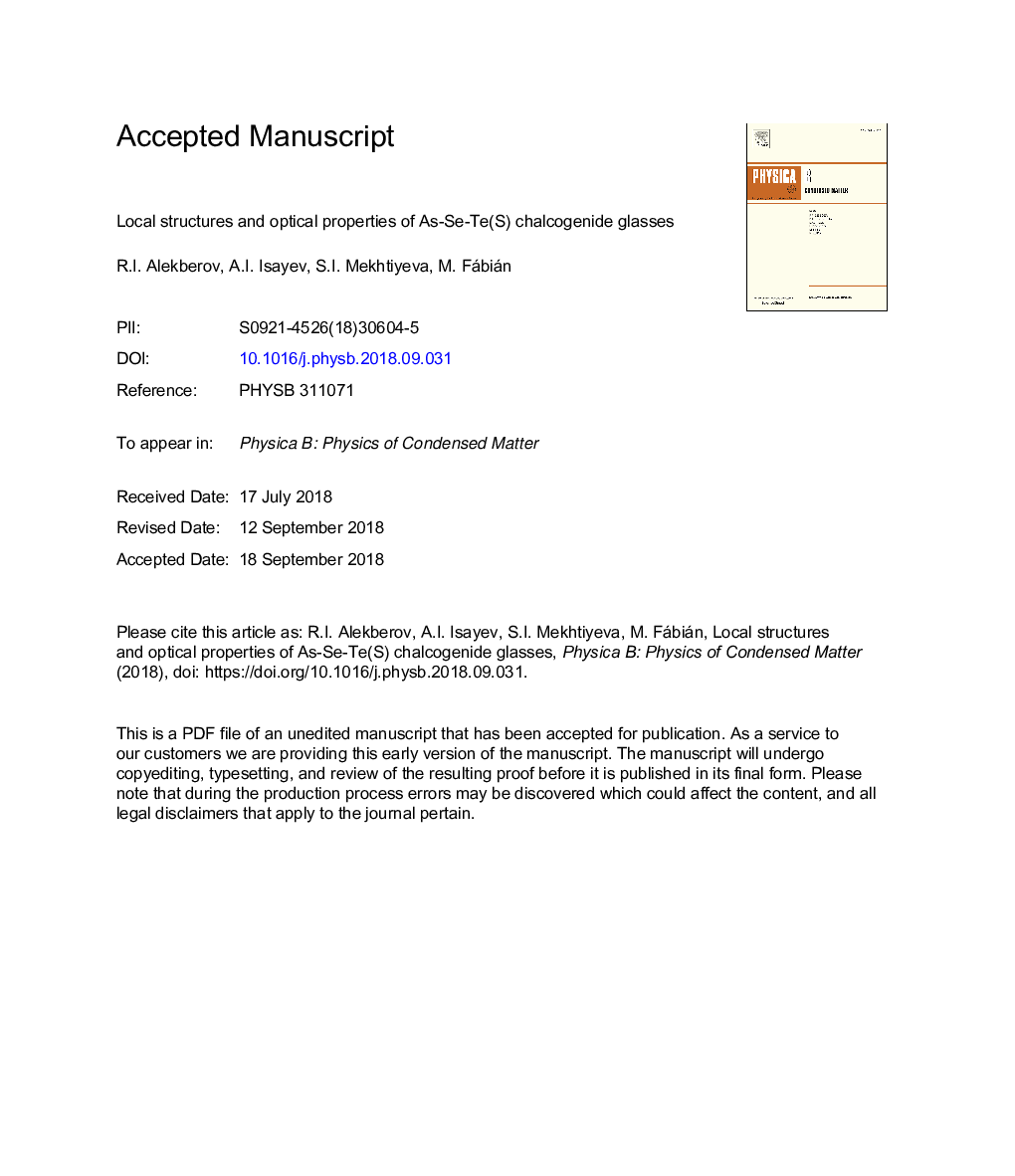| Article ID | Journal | Published Year | Pages | File Type |
|---|---|---|---|---|
| 11029453 | Physica B: Condensed Matter | 2018 | 35 Pages |
Abstract
The partial, total and average coordination number of atoms and, their neighbor distributions have been determined by the neutron diffraction method and application of the Reverse Monte Carlo modeling for experimental data in As40Se60, As40Se30S30 and As40Se30Te30 chalcogenide glasses. The total coordination number of the arsenic and chalcogen atoms is 3 and 2 for all compounds. The average coordination number is 2.4, i.e. the 8-N rule is performed and main structural element is AsSe3 type pyramids, where depending on the chemical composition Se atom is replaced by S or Te atoms. The proportion of homopolar bonds is significant in As40Se60 and As40Se30S30 compositions, but sharply decreases in As40Se30Te30. In all compositions the neighbor distances between arsenic and selenium atoms are the same within error: 2.35â¯Ã
(SeSe); 2.45â¯Ã
(AsAs) and 2.40â¯Ã
(AsSe). The existence of medium range order (MRO) is proved by the analysis of the total and partial pair structural factors and correlation functions in above mentioned compositions. The geometric dimensions of the MRO area, i.e. the quasi-periodicity of density fluctuations in the MRO area and the size of nano-voids have determined within Elliott's void-based model. The change of the optical parameters by variation of the chemical composition has been established from the analysis of the optical transmission spectra.
Related Topics
Physical Sciences and Engineering
Physics and Astronomy
Condensed Matter Physics
Authors
R.I. Alekberov, A.I. Isayev, S.I. Mekhtiyeva, M. Fábián,
